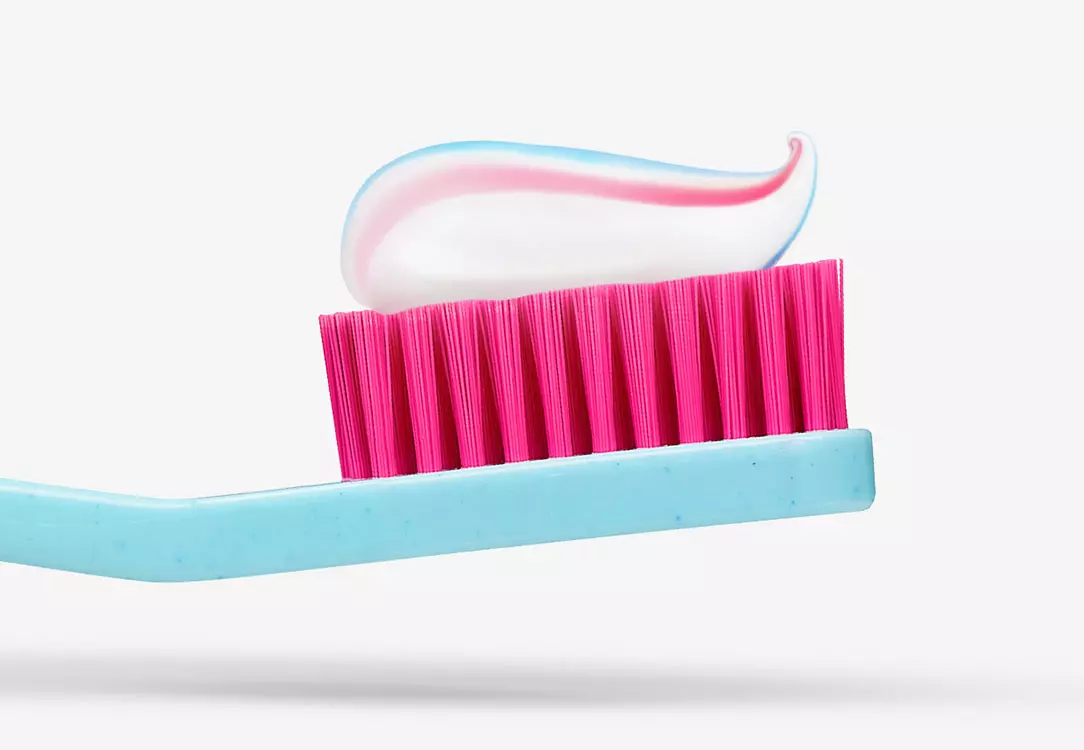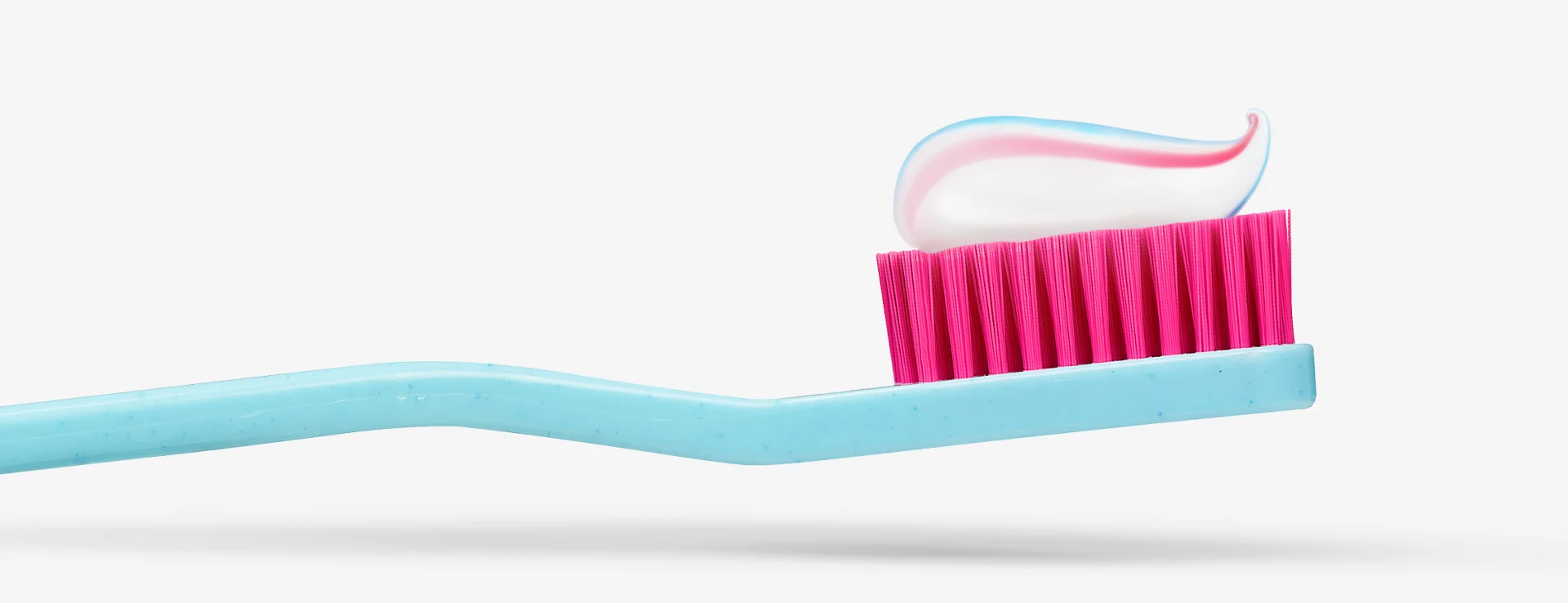Here’s a little known fact few dentists like to share: even when you stay on top of your oral health care at home, you can still have oral health issues. That’s because other factors might be contributing to the problem.
Research indicates that a number of systemic conditions have a relationship with oral health. Here at Smile Generation, we call this association the Mouth-Body Connection®.
The Mouth Body Connection refers to the effects of gum disease on your overall health, and vice versa. For example, the inflammation typical of gum disease is associated with conditions like heart disease, respiratory illness, stroke, Alzheimer’s, and cancer, among other serious diseases.
One of the most researched systemic conditions for connections with gum disease is diabetes mellitus. Per the Mayo clinic, people who have diabetes frequently have gum disease, too. The connection could be how diabetes reduces the body’s ability to fight off infection, which leads to gum infections.[i]
What is Diabetes Mellitus?
Let’s take a closer look at, diabetes mellitus. Diabetes mellitus, or diabetes, is a systemic disorder that causes elevated levels of glucose in the body. It is classified into four types.
[ii]
- Prediabetes: A diagnostic blood test called hemoglobin A1c (HbA1c) measures the amount of blood sugar attached to hemoglobin. [iii] A normal range is between 4% and 5.6%. Prediabetes is someone who has a higher HbA1c than normal but is not high enough to be classified as diabetes and treated with medication (5.7%-6.5%).
- Type 1: Previously known as juvenile diabetes, as it develops early in life, this type is an insulin-dependent form of diabetes due to the pancreas' inability to produce insulin for the body.
- Type 2: This is the most common type, with approximately 90-95% of diabetics being classified as type 2 according to the Center for Disease Control (CDC).[iv] The body can initially produce insulin, but the cells do not respond to insulin as needed, creating insulin resistance. This type generally develops slowly and later in life and is typically in relation to obesity and lack of physical activity.
- Gestational: This type develops during pregnancy. Individuals with gestational diabetes are at a greater risk of developing type 2 diabetes.
Poor oral health leads to periodontal disease or gum disease. There are many contributing factors to poor oral health, but among them is diabetes.
Periodontal disease refers to two specific conditions: Gingivitis and periodontitis. Gingivitis is classified by red, swollen, or bleeding gums and is reversible with appropriate home care. Periodontitis is a more serious condition, typified by bone loss and gum recession which can lead to tooth loss. Periodontitis is chronic and should be treated at regular intervals by your dental team.[v]
Gum Disease and Diabetes is a Two-Way Street
It’s helpful to understand that the relationship between diabetes and periodontitis and even gingivitis and diabetes is considered a bidirectional one.[vi] This is to say that people diagnosed with both diabetes and periodontal disease have two chronic conditions, each of which may affect the other. Both require frequent professional evaluations, in-depth patient education, and consistent educational reinforcement by healthcare providers.[vii]
All types of diabetes have negative effects on various bodily systems, especially when the condition is not managed or remains untreated. There are many signs, symptoms, and complications associated with your overall health that include weight loss/gain, fatigue, kidney disorders, circulation issues, nerve damage, and diabetic retinopathy (blindness).
In addition to the impacts on your overall health, there’s a range of oral complications from diabetes that affect the gums, teeth, and surrounding tissues, including:
- Puffiness or swollen gums
- Bleeding gums
- Burning sensation in the mouth
- Reoccurrence of mouth sores
- Reduced salivary gland function
- Altered taste
Many times, the inflammation in some patients’ mouths has a direct connection to their type 2 diabetes. Exacerbation of periodontal disease is considered a complication of diabetes when other factors such as poor home care or genetics are not the likely cause. Also, research shows that patients with poorly controlled type 2 diabetes are at greater risk for periodontal disease progression than patients with well-controlled type 2 diabetes.[viii]
Also, gums and diabetes have a relationship, too. Complications from diabetes do not help the body heal the inflammation in gums. Diabetic patients often have a wound healing impairment, so they recover slower from mouth ulcers and gum trauma than people who don’t have diabetes. The infected gum tissue then traps excess bacteria in the gum pockets, which is the area of the gums next to the tooth. The more bacteria present in the gum pockets, the worse the inflammation of the gums from periodontal disease gets. Left untreated, patients could have receding gums from diabetes.
However, that’s not the only way the Mouth-Body Connection between gum disease and diabetes impacts oral and overall health. Both diabetes and periodontitis can stimulate the chronic release of proinflammatory cytokines, which have a harmful effect on gum tissues. [ix] Some patients in this situation may experience bleeding gums as one of their diabetes symptoms when brushing or flossing, as well as permanent teeth that feel loose, and gum recession.
Another oral manifestation of diabetes your dental team might notice is bad breath. Bad breath and diabetes are common companions, particularly breath that smells fruity or acetone-like.
[x] This nail-polish essence on the breath could indicate a dangerous level of ketones, putting the body at risk for diabetic ketoacidosis (DKA).
Also, xerostomia, or dry mouth, another side effect of diabetes, can cause bad breath. Saliva helps control the bacteria growth in your mouth. When salivary production is lowered, it allows the bacteria to grow, which contributes to an unpleasant odor, known as halitosis. In addition, dry mouth increases the risk of tooth decay for patients with diabetes. Furthermore, diabetics are already at a higher risk for dental decay due to high levels of glucose in their blood. When combined with dry mouth, the risk tooth decay with diabetes only grows higher.
[xi]
Can Diabetes Cause Tooth Loss?
Loss of teeth and diabetes have a relationship, too, albeit an indirect one. In the relationship between the two conditions, diabetes can inhibit the gum tissue to recover from inflammation and repair itself. This chronic inflammation from diabetes gums degrades the bone and gums, which can lead to gum recession, bone loss, and eventually, tooth loss. Also, leaving poorly compromised teeth in your mouth can increase diabetic complications and introduce harmful bacteria into the bloodstream.1 In these instances, surgical intervention or removal of hopeless teeth may benefit adjacent teeth and surrounding tissues.
Can Gum Disease Cause Diabetes?
It is clear that diabetes causes teeth and gum problems, but what about the other way around? Can gum disease cause diabetes? What about gum disease and prediabetes? As we mentioned before, gum disease and diabetes is bidirectional, meaning they travel on a two-way street. So, while there is no causal link established by research, gum disease also affects type 2 diabetes. That’s because your body is a system, meaning that what affects one area of the body will have effects on the other areas.
The mouth is the gateway to the body, and systemic health is closely tied to your oral cavity, especially if you have diabetes. If you have plaque and bacteria in your mouth because of your gum disease, it will travel to the other parts of your body, too. When the infection from your gum disease travels and settles down somewhere else, it can trigger other chronic conditions, like diabetes.
[xii]
Research indicates that patients that have gum disease have a more challenging time controlling their blood sugar levels.
[xiii] One explanation is the inflammatory response to the plaque in the oral tissues makes it more difficult to control glucose levels.
[xiv]
This conclusion stems from the HbA1c present in your blood. HbA1c is a glycated hemoglobin (which are the proteins in your blood that carry oxygen to the body). Medical teams use the A1c test to check for elevated levels to determine if patient’s diabetes is under control.
[xv] According to a 2018 systemic review, an increased HbA1c level promotes complications in periodontal disease, including tooth loss. Moreover, those on the cusp with prediabetes and diagnosed with periodontal disease are at a significantly increased risk for developing type 2 diabetes.
[xvi] People that have severe gum disease may also have elevated HbA1c levels, reinforcing that the disease can go both ways: Gum disease affects blood sugar control, which aggravates current or developing diabetes.
Dentists’ Role in Diabetes Management Starts with Gum Disease Treatment
Dentists have a significant role in diabetes management stemming from their treatment of your gum disease.
[xvii] The
treatment of periodontitis includes oral hygiene instructions by your dental hygienist or dentist, a nutrition assessment and accompanying information on the role of your diet, and a periodontal cleaning of the teeth and gingival tissues.4 At each cleaning, the pocket depth of your gums should be assessed via probe readings, and the teeth will be cleaned by an ultrasonic device and hand instrumentation. An antibacterial mouth rinse such as chlorhexidine gluconate may be prescribed to control specific bacteria found in periodontal disease.
In addition to the cleanings, other treatments might be recommended for your gum disease treatment. Surgical or non-surgical intervention may be prescribed. Non-surgical therapy includes scaling and root planing, localized antibiotics, and gum irrigation. Research supports that active therapy such as scaling and root planing significantly reduces HbA1c levels at three months, with even more reduction after six months.[xviii]
In addition to the health benefits, the dentists’ role in diabetes management has other benefits, too. Diabetic patients who completed periodontal treatment also saved money on annual medical costs. Per United Concordia Dental, a dental wellness company in Pennsylvania, these patients saved $2,840 or 40 percent in annual medical cost savings over patients that did not complete periodontal treatment. In addition, patients who completed gum disease treatment experienced an outpatient drug cost savings of $1,477.
Better oral care might keep you out of the hospital, too. That same United Concordia Dental study showed that patients who completed periodontal treatment and maintenance were less likely to go to the hospital, showing a nearly 40 percent reduction in annual hospitalization admissions when compared to the untreated group.
[xix]
It is interesting to note that of the over 91,000 members of the study with both type 2 diabetes and periodontal disease, only 913 had completed gum disease treatment. That means that over 90,000 diabetics did not complete gum disease treatment.
[xx] Considering the cost savings and the reduction in hospital visits revealed in the study, it seems that avoiding periodontal treatment has few benefits to the patient. On the contrary, treating gum disease appears to have enormous health and financial benefits that may improve health outcomes for people with systemic conditions like diabetes.
What Will Your Dentist Want to Know?
Your Smile Generation-trusted dentist will want to know if you are diabetic and what type you have. Another important thing your dentist will want to know is if you are taking any medications related to your diabetes. Many of them have side effects, including dry mouth, which can lead to problems with your oral health. The dental team will also take a health history and family history, too, to ensure they have information on any inherited risk factors you might have.
Also, knowing your current HbA1c levels is helpful information for the dental team when assessing your mouth. Your dental team will review your glycemic control with you at each visit, commonly using your most recent HbA1c levels as an indicator. Ideally, your HbA1c levels will remain lower than 7%. If you do not know your HbA1c level, your Smile Generation-trusted team could administer an A1c test at your visit.
Your dental team will also want to know if you are a smoker. Smoking, gum health, and diabetes have a significant relationship. Smoking is an additional risk factor for periodontal disease and diabetes.
Tobacco use may influence negative changes to the inflammatory response, the oral microbiome, and in turn, the general health of the periodontium.
[xxi] Also, healing is impaired in smokers and diabetics, alike, and periodontal disease is a chronic inflammatory disorder. Without the ability to heal and repair itself, gingival tissues and bone can degrade to the point of tooth loss.
For patients that have not been diagnosed as a diabetic, it’s a good idea to tell the dentist about any changes you might have experienced in your mouth or overall health. This conversation is especially important if you notice any of the symptoms described above or if you have been ill recently. Also, tell the dentist if you have any other chronic conditions.
Managing Your Gum Disease and Diabetes with Home Care
Getting your oral health back in tip-top shape is an excellent way to protect your teeth and gums. It also will decrease inflammation in your mouth. That effort includes a reinvigorated devotion to consistent and comprehensive home care and seeing your dentist regularly.
Taking care of your teeth and gums can also help control some of your diabetic symptoms in the mouth. While periodontitis can only be managed in-office, gingivitis can be eradicated with good home care. Reversing this inflammatory condition is beneficial in controlling your diabetes and vice versa.
Daily and proficient brushing and flossing habits reduce the accumulation of biofilm, plaque, and bacteria on the teeth. We recommend brushing with a fluoride toothpaste twice a day for at least two minutes.
Frequent brushing might also lower your risk of getting diabetes. A 2020 study from Diabetologia, the journal published by the European Association for the Study of Diabetes, indicates that tooth brushing three times a day or more associates with an eight percent lower risk for developing diabetes. Furthermore, not brushing increases your risk for oral health disease, which the study says links to a nine percent increased risk of developing diabetes. That risk increases to 21 percent when gum disease has led to multiple missing teeth (15 or more).
[xxii]
Effective flossing requires curving the dental floss around the tooth and as far in the gum pocket as it will go, usually up to a four or five-millimeter reach. If you haven’t been flossing, be aware that your gums may bleed the first few times you floss. Bleeding occurs when the base of the pocket is ulcerated from stagnant bacteria and other causative agents, like plaque and calculus accumulation due to insufficient cleaning or flossing. Keeping up with regular flossing and preventing that accumulation will resolve the bleeding in a short time.
Also, the American Dental Association strongly recommends that patients with gum disease or periodontal disease have at least three cleanings a year instead of the usual two cleanings. Professional cleanings at more frequent intervals control the harmful bacteria present in the oral cavity and provides you the best possible outcomes for your teeth and oral health.
In addition, there are a few other things you can do to improve your oral health and protect yourself against complications in the circular relationship between periodontal disease and diabetes. Replace your toothbrush when the bristles every three or four months, or as soon as the bristles appear worn. Use a medicated mouthwash after brushing and flossing, preferably one with fluoride unless you are told differently, to be the last defense against any additional food particles or bacteria left in the mouth. Limit your sugary foods and drinks and eat a nutrient-rich diet, meaning foods that have more than empty calories. If you smoke, stopping today would be an excellent boost to your oral and overall health.
Speaking with Your Dentist About Gum Disease and Diabetes
Now that you have a better understanding of the link between diabetes and your oral health, feel free to ask your Smile Generation-trusted dental team about your oral and systemic health. You should probably ask if you are at risk for gum disease and if that means you might be at higher risk for diabetes and other systemic conditions. If you recognize any of the oral symptoms described, ask your dentist or hygienist about them, so they can examine the situation and determine if there is a problem.
If you are not a diagnosed diabetic but think you might be or if you have any questions about periodontal disease and diabetes, don’t hesitate to ask. Our team would love to share any information with you.
Patients at a few Smile Generation-trusted offices recently did that and here’s what happened:
A 21-year-old patient with moderate gingivitis was tested and scored a 98. She was a healthy-looking kid with a history of diabetes. She said to the hygienist afterward:
"When my number came back at 98, I visited the doctor and was informed that I was prediabetic. I’m glad that for $29 I took a test that made me reach out to my doc and find this out."
Another patient from another office had this to say about the experience:
“I had a PerioFitness test done, and my score came back at 91 (High). It caused me to question things bit more because while I did have some things going on with my teeth, nothing major was occurring. My dentist recommended that I speak to my primary doctor. After having blood tests done, I found out that I was prediabetic. I never would have made that appointment if my numbers wouldn’t have come back that high. Six months later, after diet changes and a new electric toothbrush, air flosser, and perio treatment, my numbers were in the 50s and I have prevented myself from getting diabetes.”
Should you need periodontal disease treatment, you can find a dentist near you with comprehensive treatment plans, smoking cessation plans, affordable financing options, and more. You can also use our Find a Dentist tool to find a trusted dentist in your area.
Find your trusted, local dentist today!
[i] Oral health: A window to your overall health. MayoClinic.org. https://www.mayoclinic.org/healthy-lifestyle/adult-health/in-depth/dental/art-20047475. Published 2021. Accessed March 29, 2022.
[ii] Darby, M. L., Walsh, M. M., Bowen, D. M., & Pieren, J. A. (2020). Dental hygiene: Theory and practice. St. Louis (Missouri): Elsevier/Saunders.
[iii] Darby, M. L., Walsh, M. M., Bowen, D. M., & Pieren, J. A. (2020). Dental hygiene: Theory and practice. St. Louis (Missouri): Elsevier/Saunders.
[iv] Mealey, B. L. (2006). Periodontal disease and diabetes. The Journal of the American Dental Association, 137. doi:10.14219/jada.archive.2006.0404
[v] THE MOUTH: The Missing Piece To Overall Wellness And Lower Medical Costs. United Concordia; 2014. https://www.unitedconcordia.com/docs/united%20concordia%20oral%20health%20whitepaper.pdf. Accessed March 29, 2022.
[vi] Mealey, B. L. (2006). Periodontal disease and diabetes. The Journal of the American Dental Association, 137. doi:10.14219/jada.archive.2006.0404
[vii] Mealey, B. L. (2006). Periodontal disease and diabetes. The Journal of the American Dental Association, 137. doi:10.14219/jada.archive.2006.0404
[viii] Hallmon, W. W., & Mealey, B. L. (1992). Implications of Diabetes Mellitus and Periodontal Disease. The Diabetes Educator, 18(4), 310-315. doi:10.1177/014572179201800409
[ix] Hallmon, W. W., & Mealey, B. L. (1992). Implications of Diabetes Mellitus and Periodontal Disease. The Diabetes Educator, 18(4), 310-315. doi:10.1177/014572179201800409
[x] Darby, M. L., Walsh, M. M., Bowen, D. M., & Pieren, J. A. (2020). Dental hygiene: Theory and practice. St. Louis (Missouri): Elsevier/Saunders.
[xi] Darby, M. L., Walsh, M. M., Bowen, D. M., & Pieren, J. A. (2020). Dental hygiene: Theory and practice. St. Louis (Missouri): Elsevier/Saunders.
[xii] THE MOUTH: The Missing Piece To Overall Wellness And Lower Medical Costs. United Concordia; 2014. https://www.unitedconcordia.com/docs/united%20concordia%20oral%20health%20whitepaper.pdf. Accessed March 29, 2022.
[xiii] Oral health: A window to your overall health. MayoClinic.org. https://www.mayoclinic.org/healthy-lifestyle/adult-health/in-depth/dental/art-20047475. Published 2021. Accessed March 29, 2022.
[xiv] Hall K, Sanjai Sinha M. What Gum Disease Can Mean for Your Overall Health. EverydayHealth.com. https://www.everydayhealth.com/periodontal-disease/what-gum-disease-can-mean-your-overall-health/. Published 2018. Accessed March 30, 2022.
[xv] Dansinger, MD M. The Hemoglobin A1c Test & Chart. WebMD.com. https://www.webmd.com/diabetes/guide/glycated-hemoglobin-test-hba1c. Published 2020. Accessed March 30, 2022.
[xvi] National Institute of Diabetes and Digestive and Kidney Diseases (NIDDK) Diabetes Statistics. June 2016.
[xvii] Oral health: A window to your overall health. MayoClinic.org. https://www.mayoclinic.org/healthy-lifestyle/adult-health/in-depth/dental/art-20047475. Published 2021. Accessed March 29, 2022.
[xviii] Darby, M. L., Walsh, M. M., Bowen, D. M., & Pieren, J. A. (2020). Dental hygiene: Theory and practice. St. Louis (Missouri): Elsevier/Saunders.
[xix] THE MOUTH: The Missing Piece To Overall Wellness And Lower Medical Costs. United Concordia; 2014. https://www.unitedconcordia.com/docs/united%20concordia%20oral%20health%20whitepaper.pdf. Accessed March 29, 2022.
[xx] THE MOUTH: The Missing Piece To Overall Wellness And Lower Medical Costs. United Concordia; 2014. https://www.unitedconcordia.com/docs/united%20concordia%20oral%20health%20whitepaper.pdf. Accessed March 29, 2022.
[xxi] American Diabetes Association. (2018, March 22). Statistics About Diabetes. American Diabetes Association. http://www.diabetes.org/diabetes-basics/statistics/
[xxii] Chang, Y., Lee, J.S., Lee, KJ. et al. Improved oral hygiene is associated with decreased risk of new-onset diabetes: a nationwide population-based cohort study. Diabetologia 63, 924–933 (2020). https://doi.org/10.1007/s00125-020-05112-9
Smile Generation blog articles are reviewed by a licensed dental professional before publishing. However, we present this information for educational purposes only with the intent to promote readers’ understanding of oral health and oral healthcare treatment options and technology. We do not intend for our blog content to substitute for professional dental care and clinical advice, diagnosis, or treatment planning provided by a licensed dental professional. Smile Generation always recommends seeking the advice of a dentist, physician, or other licensed healthcare professional for a dental or medical condition or treatment.







